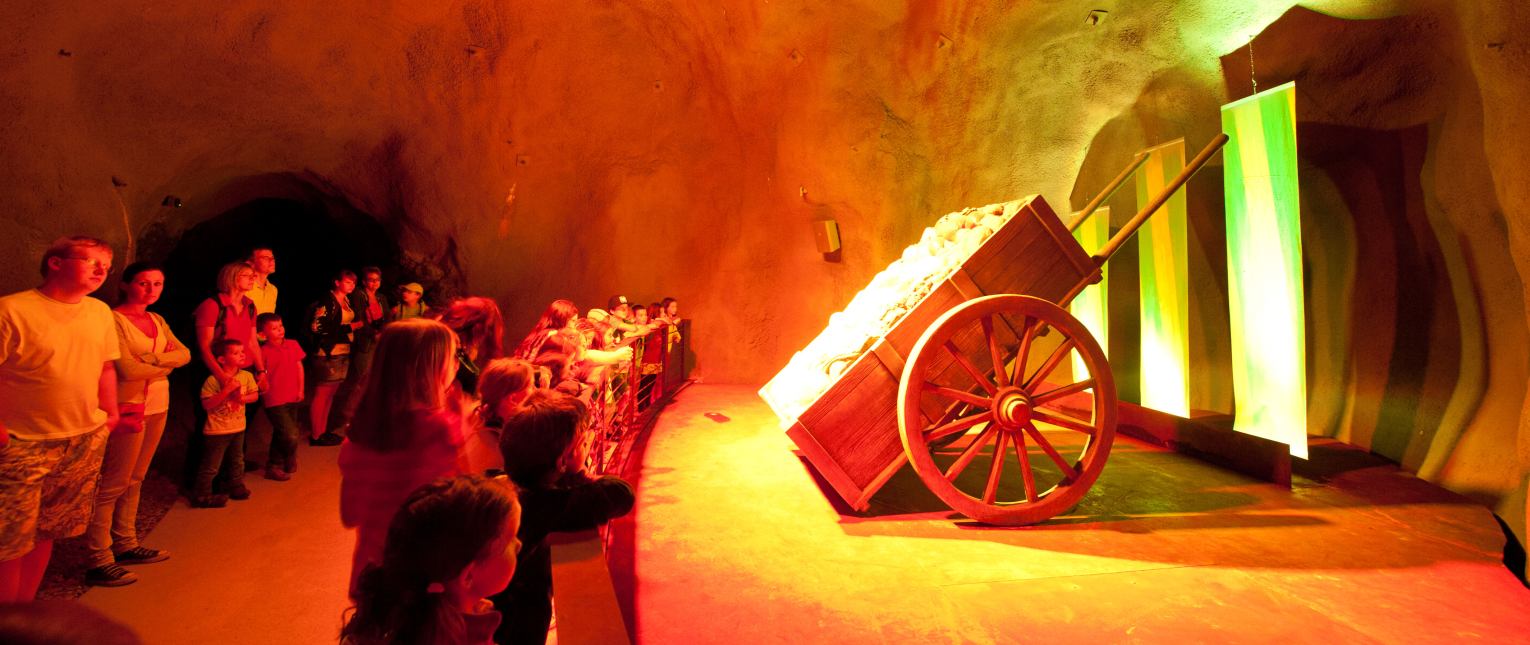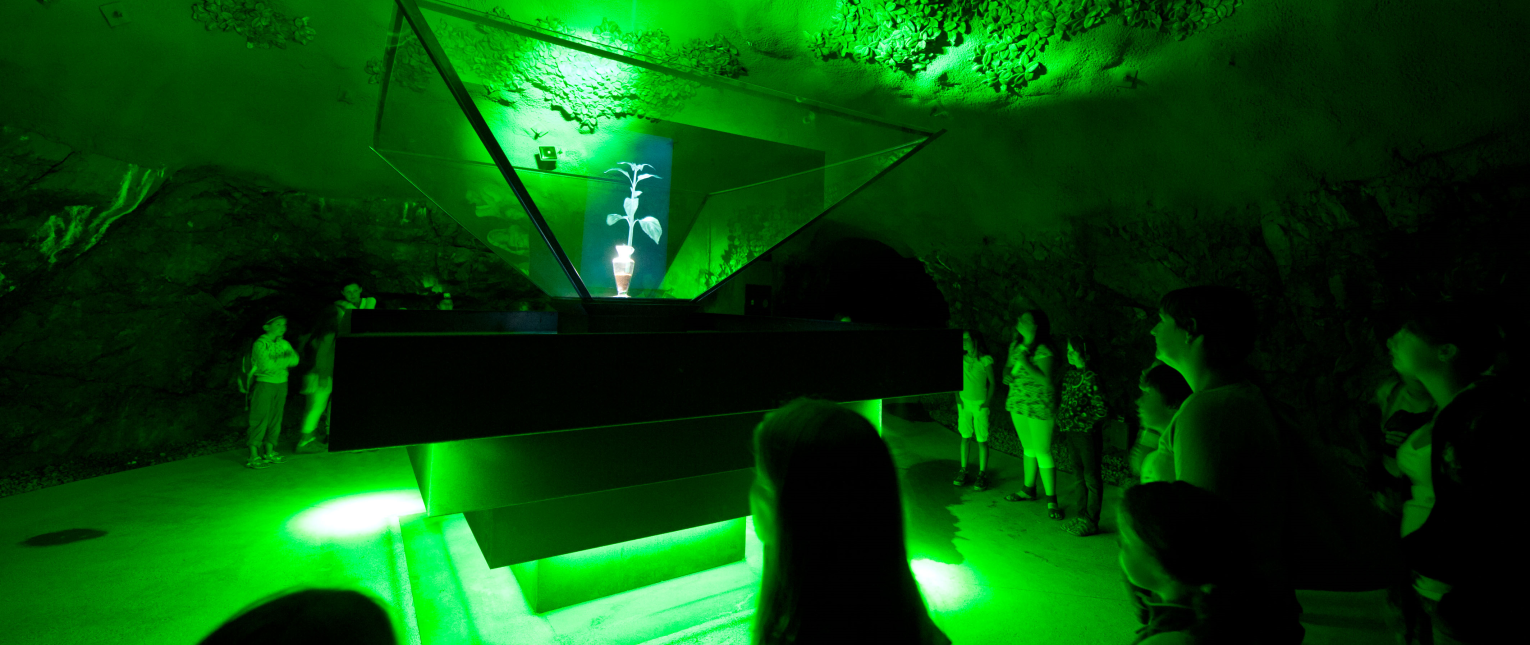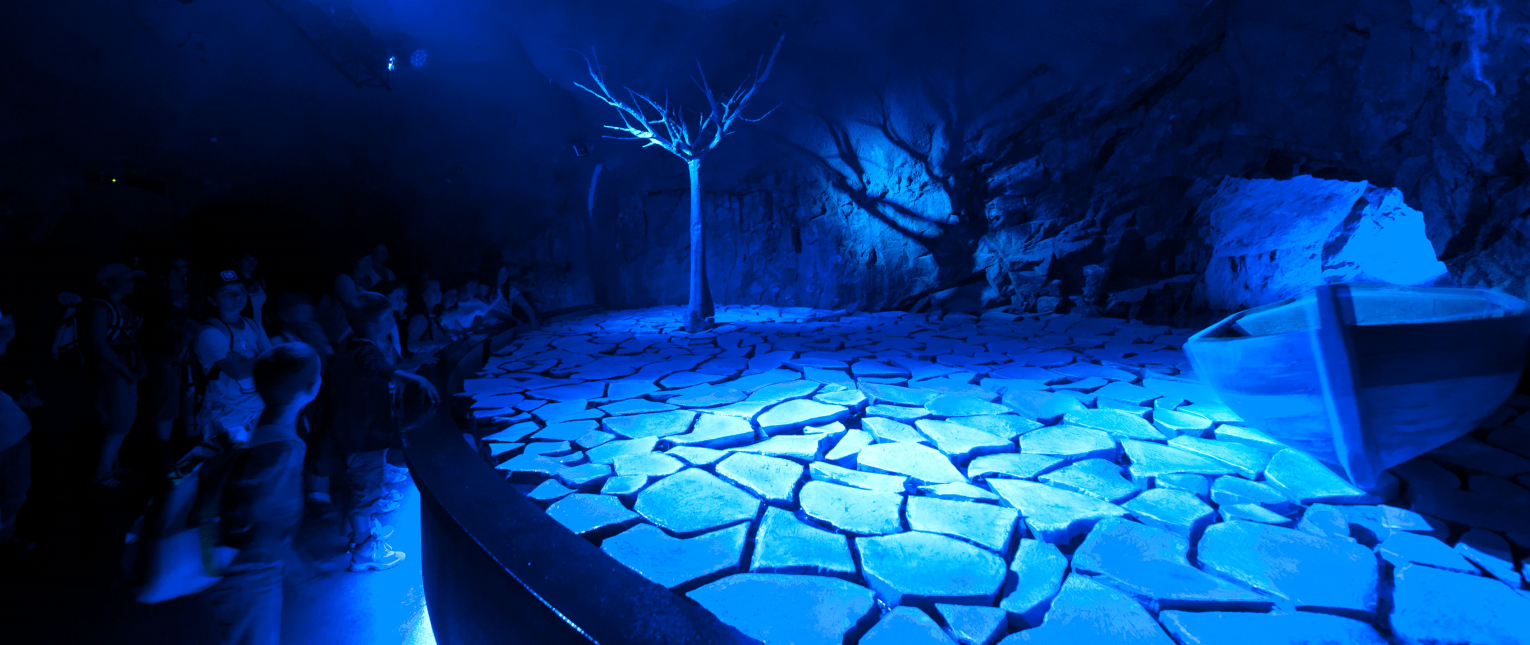The Botanical Underworld
Eerie and entertaining, illuminating and informative: the underground stations, with multimedia elements, teach visitors the basic botany of underground plant life.
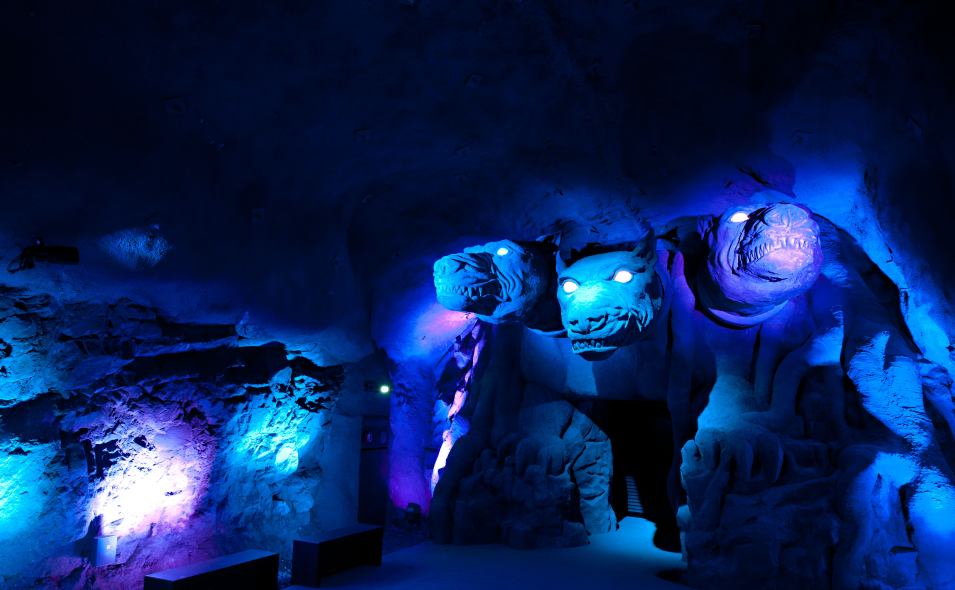
| Current English Showtime | ||||
| 9:18 AM | 11:00 AM | noon | 1:00 PM | 2:00 PM |
| 3:00 PM | 4:00 PM | 5:00 PM | 6:00 PM | |

Please note
The duration of the multimedia demonstration (without guidance) is 17 minutes, and it takes place every 6 minutes; the language of presentation alternates between German, Italian and English. The subterranean temperature is 14 °C throughout the entire year, so suitable clothing is recommended. The attraction is not suitable for people with claustrophobia. An adult must accompany children under the age of 16, and entrance is not recommended for children under 8 years of age.
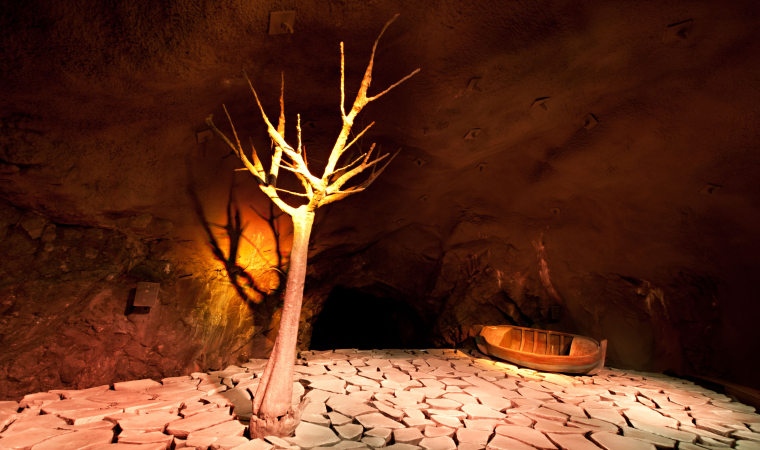
No water, no life! As a result of sunlight, water evaporates from rivers, lakes and seas in an eternal cycle. Stored in the clouds as water vapor, it returns to the soil, streams, rivers and lakes as precipitation (rain, snow and hail). A lack or excess of water can lead to devastating effects such as drought or flooding.
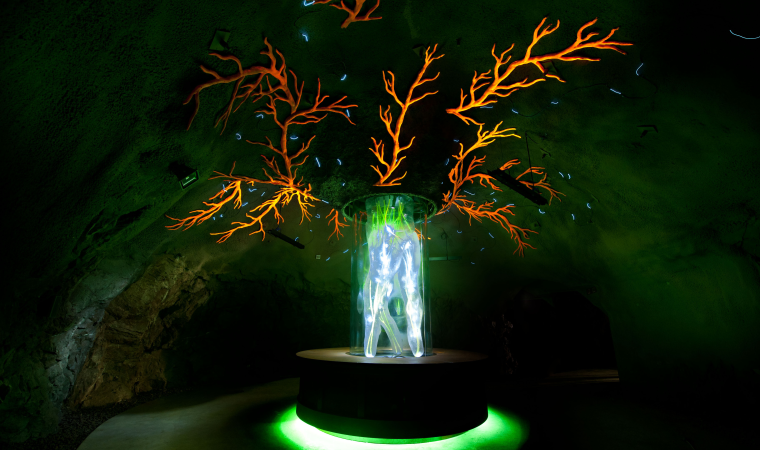
Plant roots absorb water and nutrients from the soil and transfer them into the plant parts found above ground. Because a lot of water evaporates through a plant’s leaves, a purely physical pulling effect is created that causes water to be delivered from the roots to the stem via the vascular tissue. In this way, a plant can draw water up to 120 metres high, in defiance of gravity. The mucous external cells of the root canal (calyptra) facilitate the penetration of the root tip in the soil. Thus, roots in the search for water can penetrate ever further into the depth of the soil, even in crevices or rock clefts. Growing tree roots can exert so much pressure on their environment that the rock fragments are loosened and blown off.
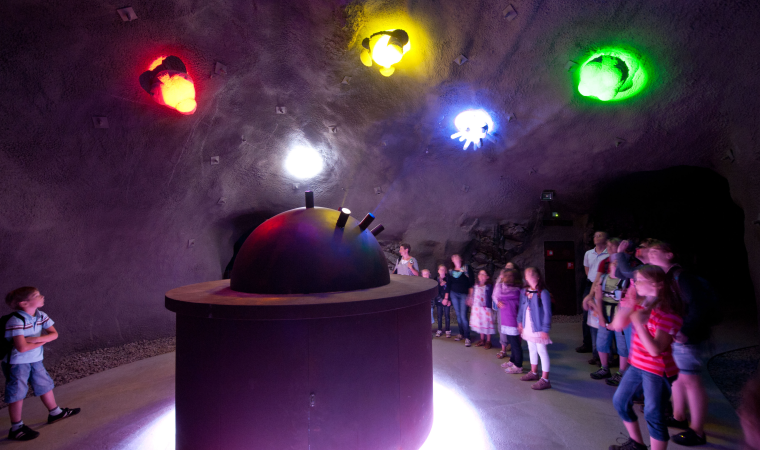
Soil is among the most densely populated habitats on earth and plays a major role in the nutrient cycle. Amoebae, ants, worms and many other animals dig through it, mix it up and loosen it. Together with bacteria, fungi, algae and lichens they decompose plant residue, dead animals and other organic material into their individual components. The newly released nutrients are once again available to the plants. The various metabolic processes of plants requires macro-micro elements: large amounts of nitrogen, sulfur, phosphorus, potassium, calcium and magnesium are all used. The trace elements iron, boron, manganese, copper, zinc, molybdenum and chlorine are also indispensable, though present in very small amounts. Many plant roots maintain close contact with mycorrhiza fungi, which feed nutrient salts and water to the plants; in return they receive a portion of the carbohydrates produced by photosynthesis.
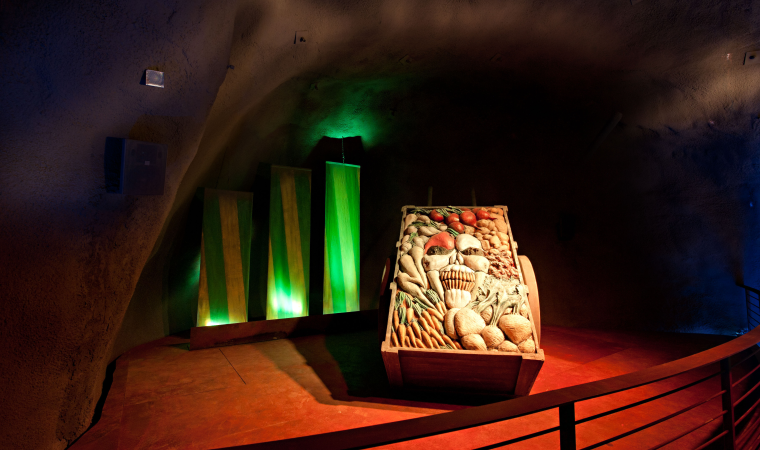
Many species of plants store large amounts of vital energy reserves in their subterranean parts, in the form of starch, inulin or sugar. When necessary, during the new growth for example, the reserves are brought back to the above-ground plant parts. For centuries, many important foodstuffs have been produced out of such underground “storage chambers” of plants: potatoes, manioc, carrots, black radishes, sugar beets, celery, radishes, parsnips, beetroots, Jerusalem artichokes and horseradish. Medicinal active ingredients are also obtained from the underground plant parts (e.g., from the valerian root). The mandrake has been one of the most well known magic and medicinal plants since antiquity, due to the humanlike form of its root and what it contains. Meanwhile aconitine, sourced from the tuber of the devil’s helmet, is deadly even in small doses.
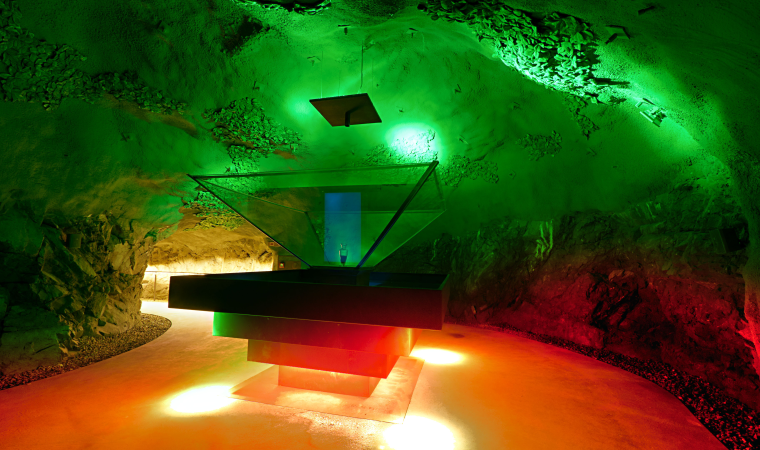
Sunlight is essential for life on earth. Plants can only produce energy-rich, plant-based building materials and energy through the process of photosynthesis. It is through this process that the oxygen required for human and animal life is released. Germination begins inside plant seeds, the “embryos” of plants: the germinal leaves first stretch towards the light. In the green parts of plants, photosynthesis produces organic substances from carbon and water by means of sunlight; these substances also serve as storage for further growth. Flowers develop if adequate energy is available; after fertilization, seeds are formed inside them – generation of a new plant which thus begins the cycle of life anew.

